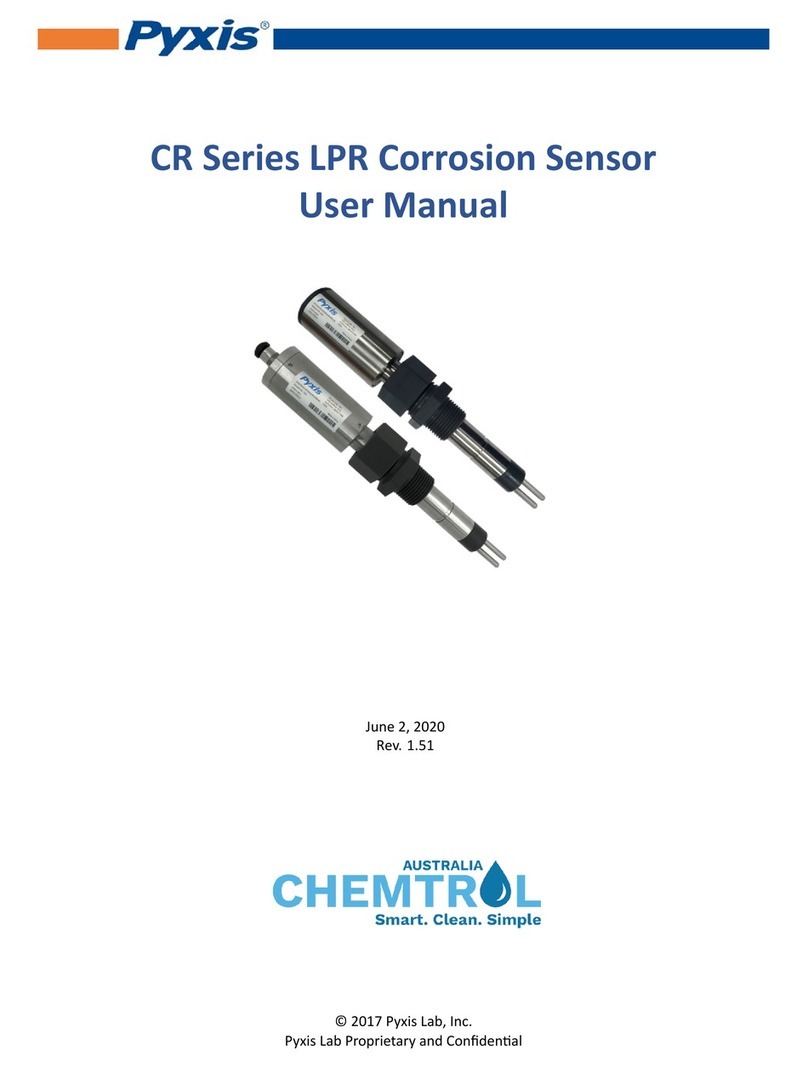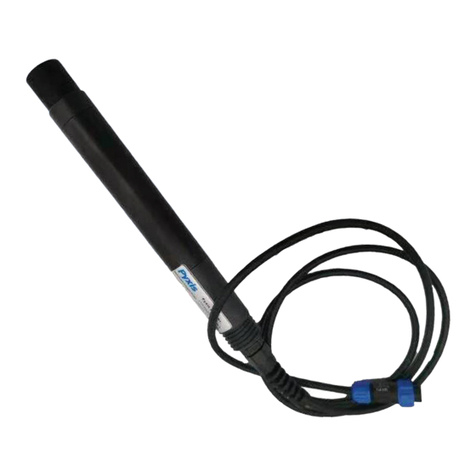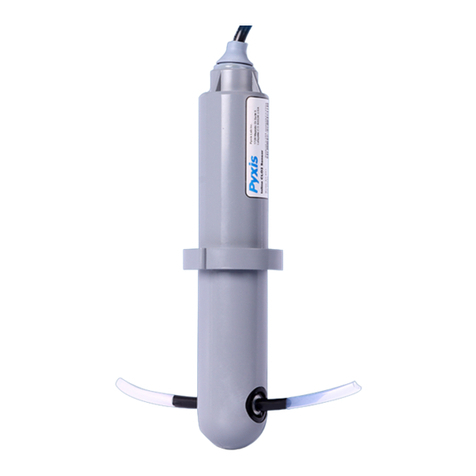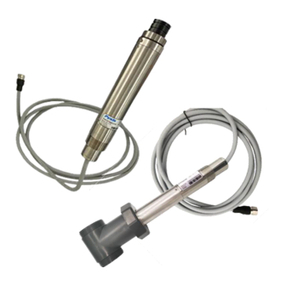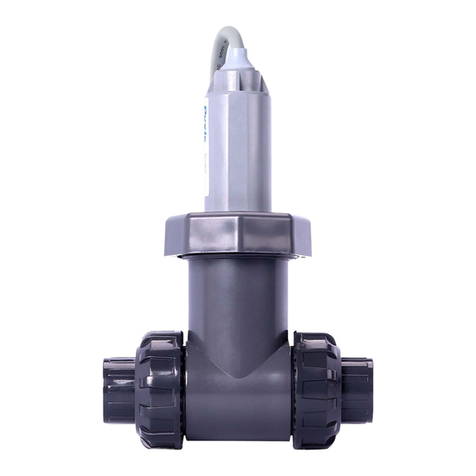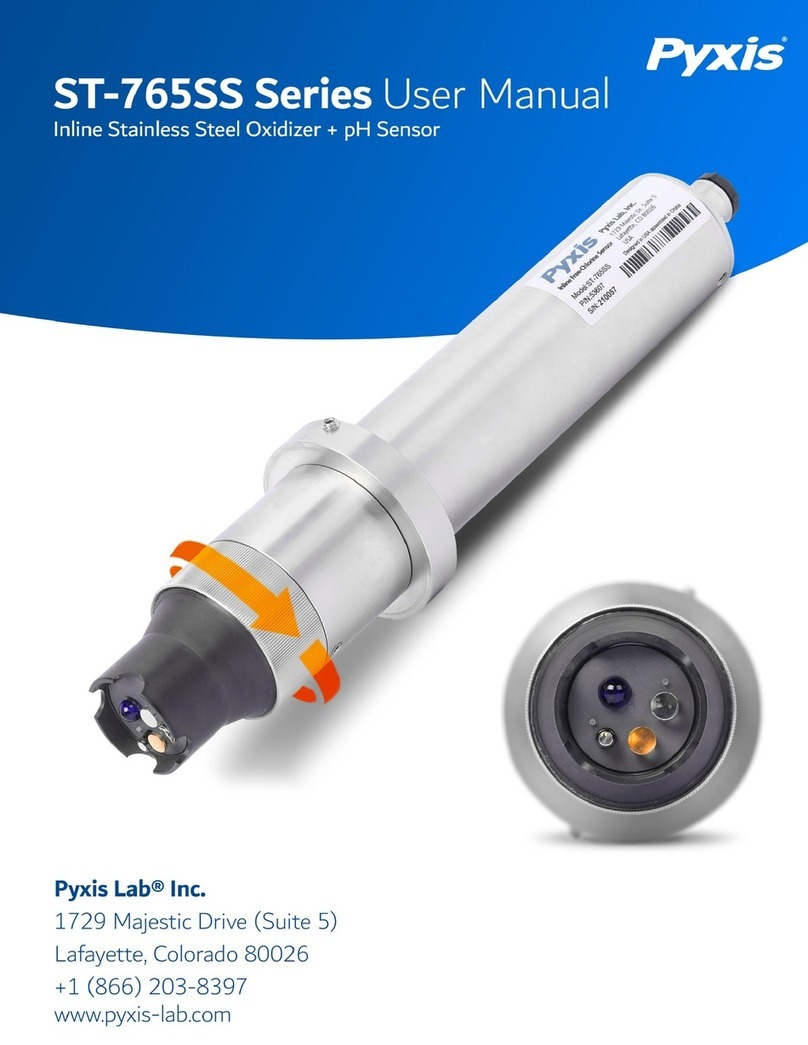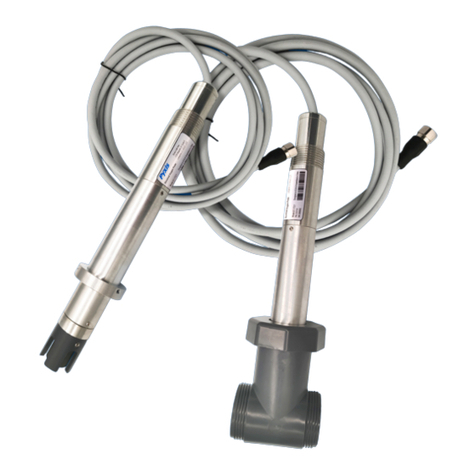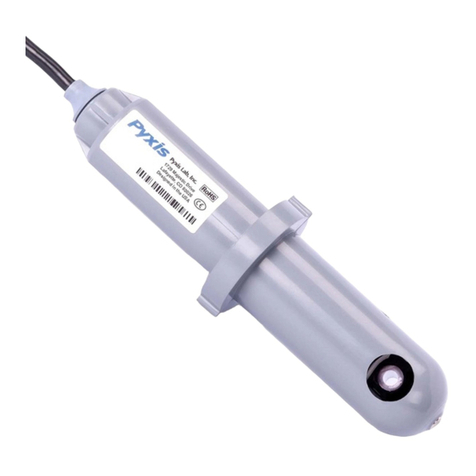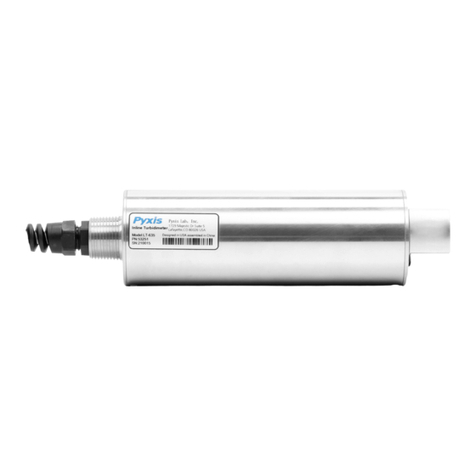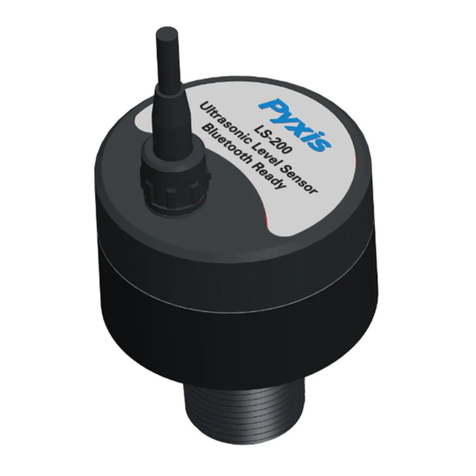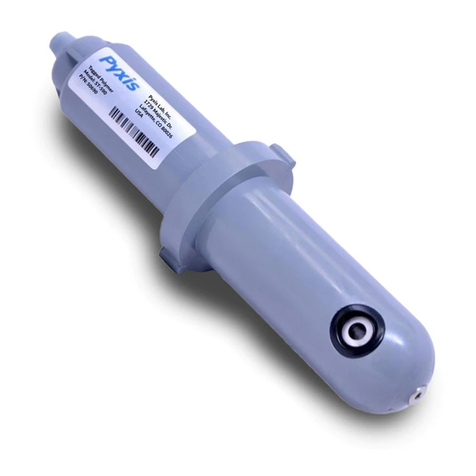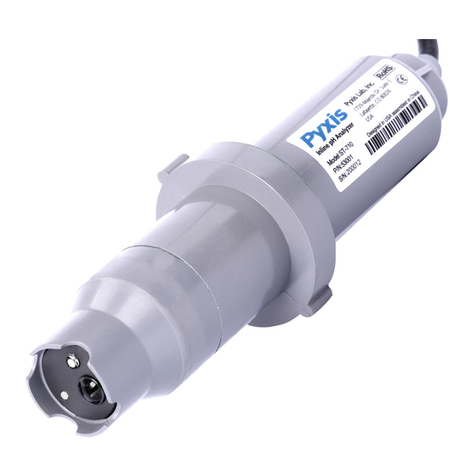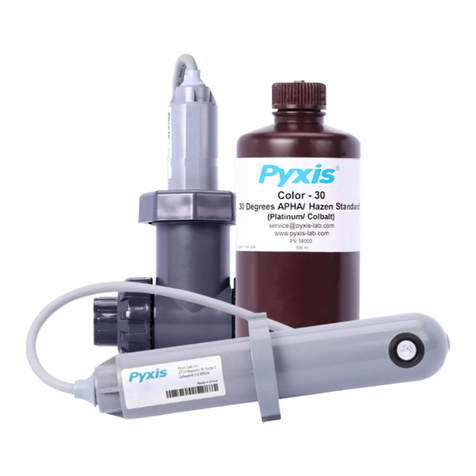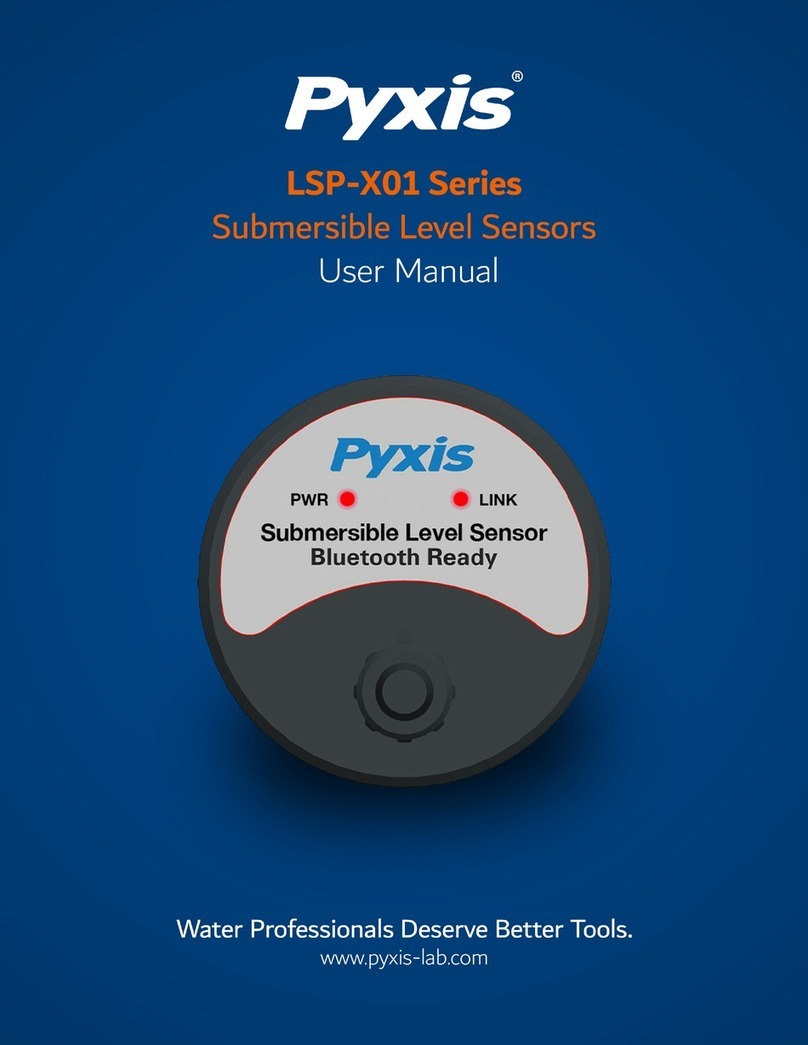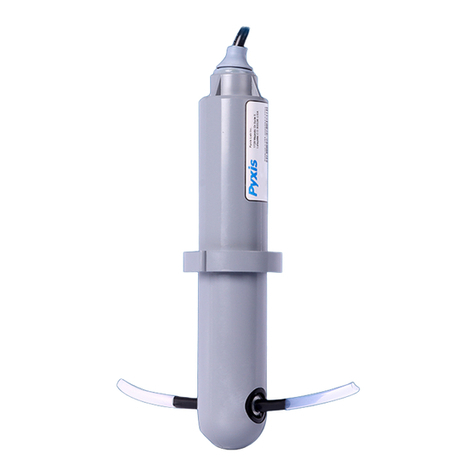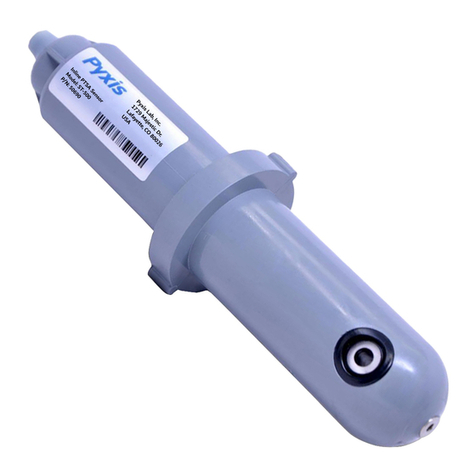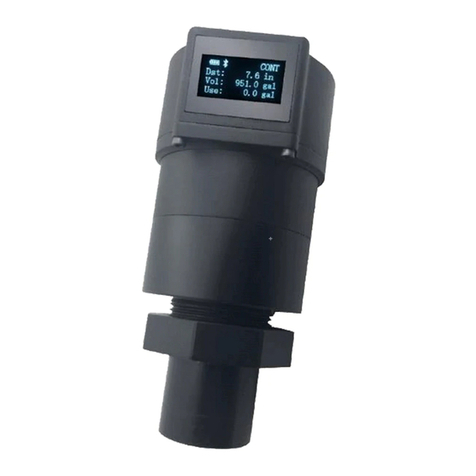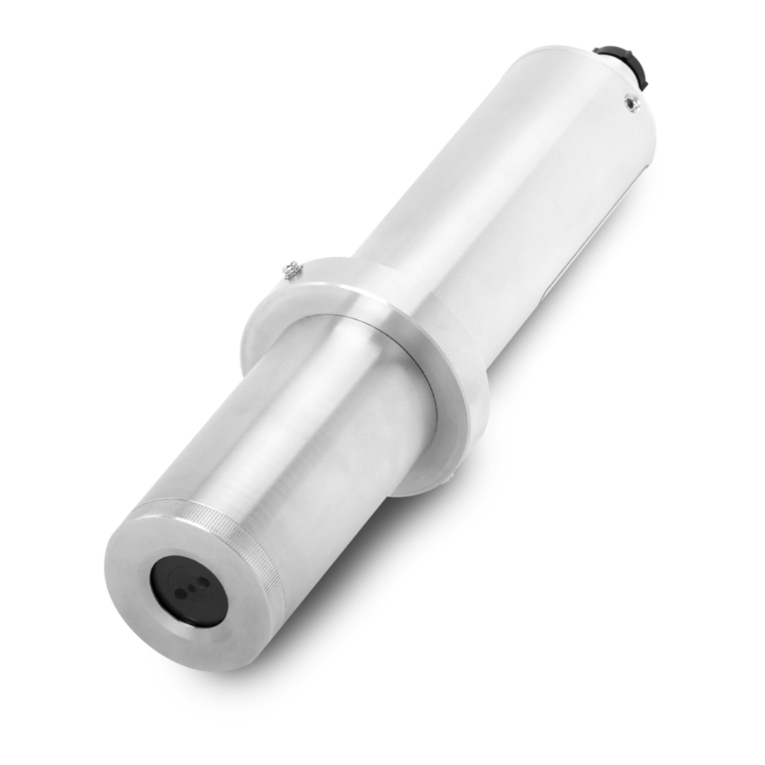
1 Introducon
The Pyxis ST-500 Series inline uorometer sensor measures the concentraon of uorescence tracer PTSA
(pyrenetetrasulfonic acid) in water. The standard ST-001 Tee Assembly provided with each ST-500/ST-500RO
sensor, has two 3/4” female NPT ports and can be placed to an exisng 3/4” sample water line. Pyxis Lab
also oers 2” and 3” Tee formats for larger ow installaons. The 4–20mA current output of the ST-500 Se-
ries sensor can be connected to any controller that accepts an isolated or non-isolated 4–20mA input. The
ST-500 Series sensor is a smart device. In addion to measuring uorescence, the ST-500 Series sensor has
an extra photo-electric components that monitors the color and turbidity of the sample water. This extra
feature allows automac color and turbidity compensaon to eliminate interference commonly associated
with real-world waters.
The Pyxis ST-500 Series sensor has a short uidic channel and can be easily cleaned. The uidic and op-
cal arrangement of the ST-500 Series sensor is designed to overcome shortcomings associated with other
uorometers that have a distal sensor surface or a long, narrow uidic cell. Tradional inline uorometers
are suscepble to color, turbidity interference, and fouling, making them very dicult to properly clean.
The Pyxis ST-500 Series sensor uses a narrow wavelength band gallium phosphide photodiode and high
temperature-tolerant and humidity-resistant opcal lters. This combinaon greatly enhances the robust-
ness of the sensor. It can be operated under a wide range of ambient condions without the need of humid-
ity and temperature regulaon. The performance of the ST-500 Series sensor can be stable and consistent
for a long period of me.
2 Specicaons
Table 1. ST-500 Series Specicaons
Specicaon*ST-500 ST-500RO ST-500SS
P/N 50661 50669 50700
Range 0–300 ppb 0–40 ppb 0–300 ppb
Resoluon 0.01 ppb
Accuracy ±1% of reading
Calibraon Two-point calibraon against standard soluon
Outputs 4–20mA Analog Output, RS-485 Digital Output with Modbus protocol
Installaon
Custom tee assembly (P/N:
ST-001) with 3/4” FNPT socket
& threaded ports
Custom tee assembly (P/N:
ST-001) with 3/4” FNPT socket
& threaded ports
3/4” FNPT threaded ports
Cable Length 5 with IP67 connectors
Power Supply 22–26 VDC, 1 W
Dimension (L ×
Dia)†6.8 ×1.44 inch (172.7 ×36.6 mm)
Weight 0.37 lbs (170 g) 0.37 lbs (170 g) 2.5 lbs (1130 g)
Material CPVC CPVC 304 Stainless Steel
Operaonal
Temperature 40–120 °F (4–49 °C)
Storage
Temperature -4–140 °F (-20–60 °C)
Pressure Up to 100 psi (0.7 MPa) Up to 100 psi (0.7 MPa) Up to 290 psi (2.0 MPa) at 149
°F (65 °C)
